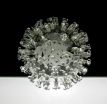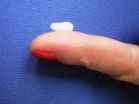The study, which is published online today (Wednesday 12 January) in the European Heart Journal [1], is the first in a large, representative, multi-ethnic population to look at the links of the total amount of time spent sitting down and breaks in sedentary time, with various indicators of risk for heart disease, metabolic diseases such as diabetes, and inflammatory processes that can play a role in atherosclerosis (blocked arteries).
It found that prolonged periods of sedentary time, even in people who also spent some time in moderate-to-vigorous exercise, were associated with worse indicators of cardio-metabolic function and inflammation, such as larger waist circumferences, lower levels of HDL ("good") cholesterol, higher levels of C-reactive protein (an important marker of inflammation) and triglycerides (blood fats).
However, the study also found that, even in people who spent a long time sitting down, the more breaks they took during this time, the smaller their waists and the lower the levels of C-reactive protein.
There were some racial and ethnic differences. The most significant was that longer sedentary time had a marked adverse effect on waist circumference for non-Hispanic whites only, but made no difference to Mexican Americans and appeared to be beneficial for non-Hispanic blacks.
Dr Genevieve Healy, a research fellow [2] at the School of Population Health, The University of Queensland, Australia, who led the study, said: "Overall, for length of sedentary time, the most clinically significant findings were for blood fats and markers of insulin resistance. For the number of breaks in sedentary time, the most significant differences were observed for waist circumference. The top 25% of people who took the most breaks had, on average, a 4.1cm smaller waist circumference than those in the lowest 25%."
Dr Healy and her colleagues analysed data from 4,757 people aged 20 and over, who took part in the US National Health and Nutrition Examination Survey between 2003 and 2006. The participants wore a small device called an accelerometer, which monitored the amount and intensity of walking or running activity. It was worn on the right hip during waking hours for seven days and it gave researchers information on sedentary time and breaks in sedentary time. Measurements were taken of waist circumference, blood pressure, cholesterol levels and C-reactive protein concentrations, and they also measured levels of triglycerides, plasma glucose and insulin in a sub-sample of participants who were fasting when attending a morning examination. The researchers accounted statistically for socio-demographic differences between study participants, their medical histories and their lifestyles (smoking, alcohol intake, diet).
The least amount of sedentary time was 1.8 hours per day, the most 21.2 hours per day; the least number of breaks over the full seven days was 99, and the most was 1,258.
Dr Healy said: "The benefits of regular participation in moderate-to-vigorous intensity exercise are well accepted scientifically and by the general public. However, the potential adverse health impact of prolonged sitting (which is something that we do on average for more than half of our day), is only just being realised. Our research highlights the importance of considering prolonged sedentary time as a distinct health risk behaviour that warrants explicit advice in future public health guidelines. In particular, the findings are likely to have implications for settings where prolonged sitting is widespread, such as in offices.
"Our research showed that even small changes, which could be as little as standing up for one minute, might help to lower this health risk. It is likely that regular breaks in prolonged sitting time could be readily incorporated into the working environment without any detrimental impact on productivity, although this still needs to be determined by further research. 'Stand up, move more, more often' could be used as a slogan to get this message across."
She said that existing occupational health and safety guidelines recommend regular changes in posture and a variety of work tasks, and that these would help to incorporate more breaks from sitting in the working day, and might lead to less sedentary time overall. Practical tips that might help to do this in an office-based workplace included: Standing up to take phone calls Walking to see a colleague rather than phoning or emailing Having standing meetings or encouraging regular breaks during meetings for people to stand up Going to a bathroom on a different level Centralising things such as rubbish bins and printers so that you need to walk to them Taking the stairs instead of the lift where possible.
Dr Healy said that the size of the differences in the various cardio-metabolic and inflammatory risk biomarkers between the top and bottom 25% of people in terms of their sedentary time was large enough to suggest that "in theory, population-wide reductions in sedentary time of between one to two hours a day could have a substantial impact on the prevention of cardiovascular disease."
She concluded: "Prolonged sedentary time is likely to increase with future technological and social innovations, and it is important to avoid prolonged periods of sitting and to move more throughout the day. Reducing and regularly breaking up sedentary time may be an important adjunct health message, alongside the well-established recommendation for regular participation in exercise. While further evidence of a causal nature is required, less sitting time would be unlikely to do harm. It would, at the very least, contribute to increased overall levels of daily energy expenditure and could help to prevent weight gain."
### Notes:
[1] "Sedentary time and cardio-metabolic biomarkers in US adults: NHANES 2003-06". European Heart Journal. doi:10.1093/eurheartj/ehq451
[2] The study was supported by a National Health and Medical Research Council/National Heart Foundation of Australia postdoctoral fellowship to Dr Healy; a Victorian Health Promotion Foundation Public Health Research Fellowship to David Dunstan; and a Queensland Health Core Research Infrastructure grant and NHMRC Program Grant funding to Elisabeth Winkler and Neville Owen.



